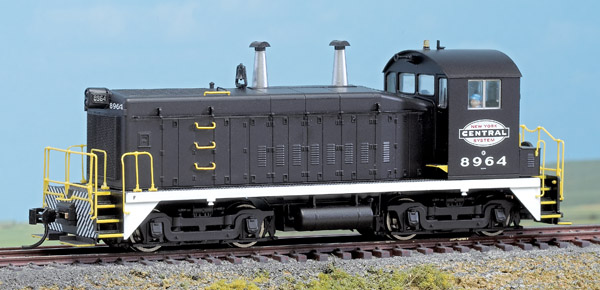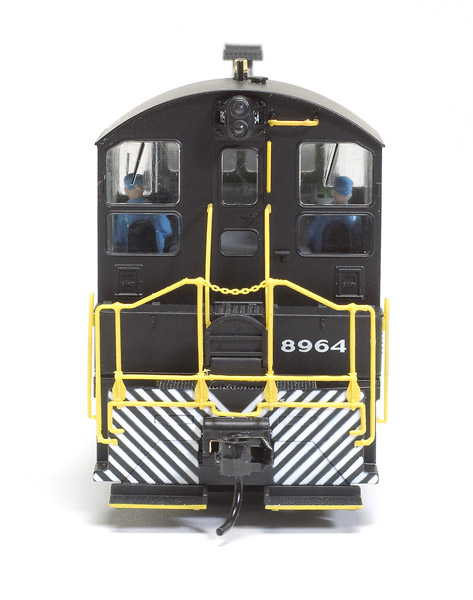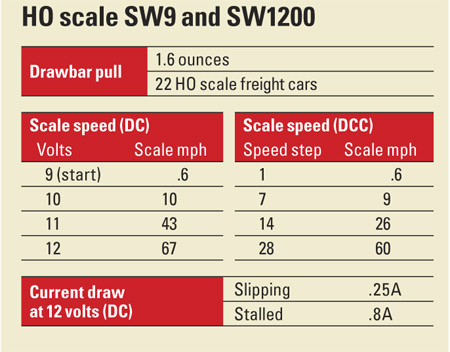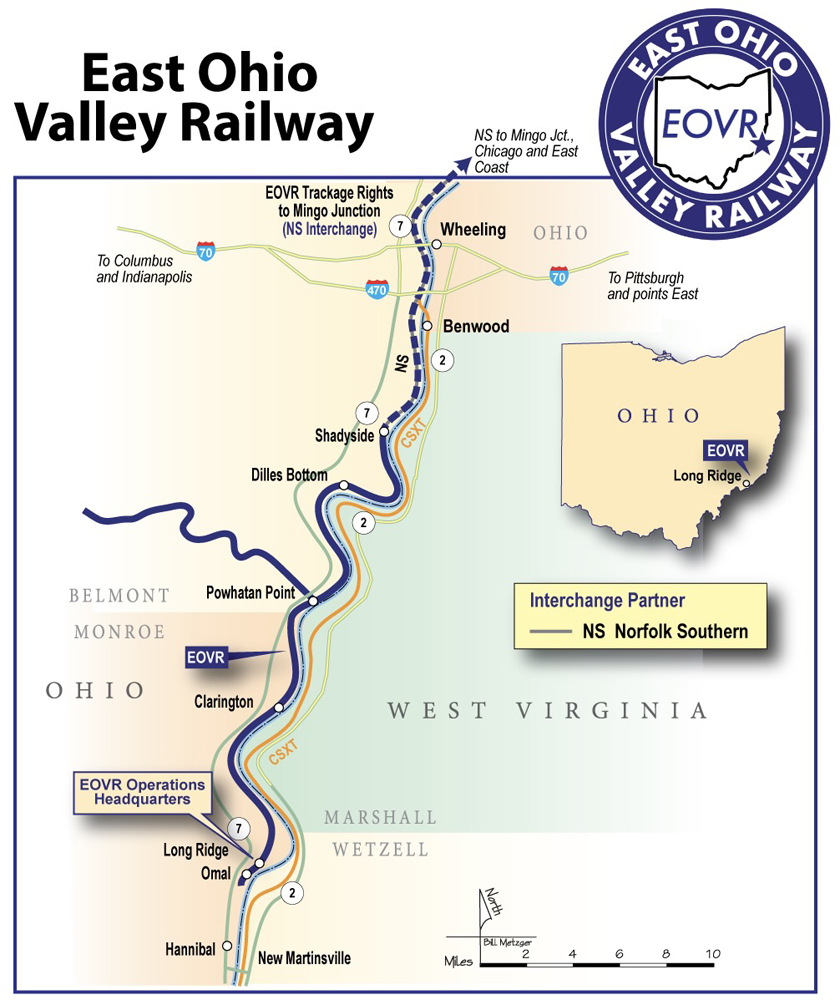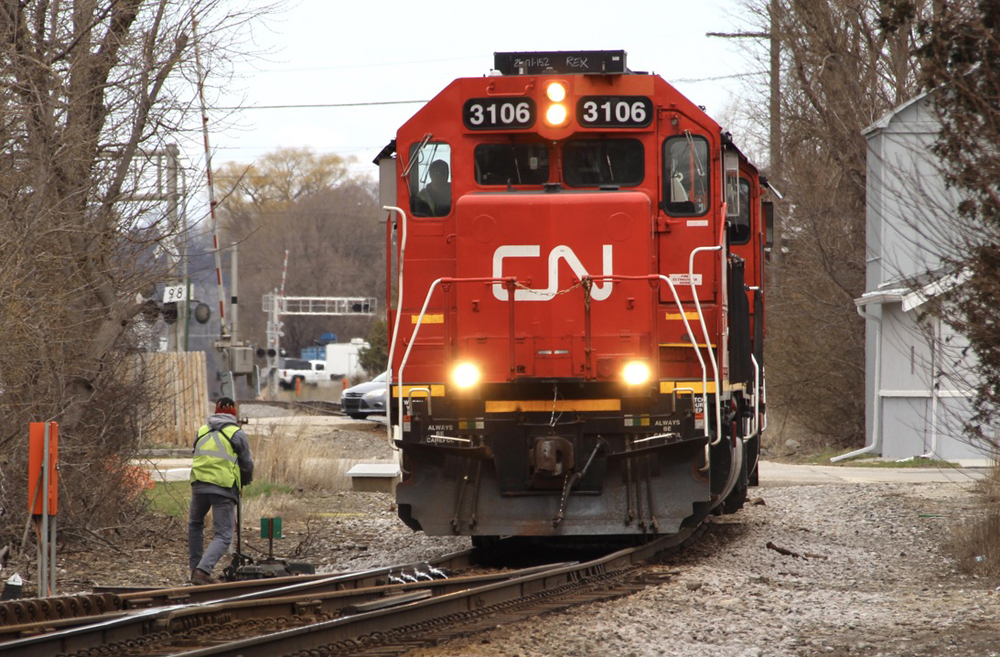More horsepower. In the 1950s, railroads hungry for more power snapped up diesels of all sizes as soon as they came off the assembly lines. When EMD put its new 1,200-hp 567A motor into a switcher body in 1949, the result was a best-seller, the SW7. Slight variations on this design became the SW9, and later, the SW1200. Between these two later models, 1,832 would be sold to more than 80 Class 1 railroads, short lines, and industries.
Walthers’ model represents an SW9, built from February 1951 to December 1953, or an early SW1200, built from January 1954 to March 1955. Our sample came painted as New York Central no. 8964, which is an engine that also saw service under Penn Central and Conrail. Many SW9s and SW1200s, some in their sixth decade, are still in service for short lines, industries, and museums.
Other than the spark deflectors on the smokestacks, our locomotive looks exactly like photos of the SW1200 pictured in an EMD switcher operator’s manual. The body’s major dimensions match those printed in that manual, as well as drawings in the Model Railroader Cyclopedia, Vol. 2: Diesel Locomotives (Kalmbach Publishing Co., out of print).
I removed the hood by using a small screwdriver to pry loose five plastic catches under the body. Most of the space under the hood is occupied by a hefty-looking can motor and its twin brass flywheels. The speaker enclosure occupies the very front of the hood. Mounted on top are the headlight’s light-emitting diode and the DCC decoder. Driveshafts with brass worm gears drive both trucks’ gearboxes.
The model started to move at 8.5V, creeping along smoothly at less than 1 scale mph. At 12V, the SW9 topped out at 67 mph, pretty close to the prototype’s maximum speed of 65 mph listed in the EMD manual. The motor was very quiet, with no hums or buzzes, letting the sound effects shine.
In our drawbar pull test, the model mustered enough power to haul 22 HO scale cars on flat and level track, so it should have no problem shoving shorter cuts of cars over steep yard humps.
The model’s dual-mode decoder lets the operator control a number of sound effects under direct current. Flipping the direction switch changes the locomotive’s direction only if the model is stopped; while it’s moving, doing so sounds the horn. Switching it back to the direction of travel ends the horn sound. Likewise, a quick toggle of the direction switch from forward to reverse and back again starts the bell ringing; repeating the action stops it.
The horn can be Doppler shifted. After sounding the horn for at least a second, quickly toggling the switch changes the horn’s pitch, as though it were moving away from the listener. The faster the locomotive is moving at the time, the more the pitch changes. Neat!
It’s also possible to program some of the decoder’s Configuration Variables (CVs) in DC mode by toggling the power pack’s direction switch back and forth. Among the settings a user might want to change in this mode are the motor’s starting voltage, maximum voltage, helper mode, and overall sound volume. If you don’t have DCC, this programming capability is a useful tool. However, for easier DC programming you can use the QSI Quantum Engineer, available separately for $59.95. For more information see www.qsisolutions.com.
DCC performance. In DCC, the locomotive performed just as smoothly. Starting at less than 1 scale mph at speed step 1, the model accelerated through 28 speed steps to top out at almost 60 mph, just under the prototype’s maximum speed. Switching to 128 steps gave me finer control over the speed.
Digital Command Control also opened up the locomotive’s sound capabilities. Function keys let me trigger sound effect sequences like a cold startup, coupler crash, air release, and flange squeal. Programming mode also let me set the maximum volume for individual sounds, including the horn and bell.
I had a little difficulty programming the locomotive’s long address, though. It wouldn’t accept the long address the simple way while programming on the main with our MRC Prodigy Advance Squared DCC system. The decoder operations manual acknowledges this, though, and helpfully presents a workaround. Once I programmed a few extra CVs to tell the DCC decoder I wanted to use a specific long address, the locomotive responded normally.
Runs as good as it looks. Walthers’ upgraded Proto 2000 EMD switcher is a smooth runner and a sharp looker. This little workhorse would be just as home on a 1950s-era model railroad as on a modern-day industrial layout.
Price: Direct-current model, $159.98; DCC and sound, $239.98
Manufacturer
Wm. K. Walthers, Inc.
P.O. Box 3039
Milwaukee, WI 53201
www.walthers.com
Road names: New York Central; Atchison, Topeka & Santa Fe; Chessie System (Baltimore & Ohio reporting marks); Chicago, Burlington & Quincy; Chicago & North Western; North American Ethanol; Philadelphia, Bethlehem & New England (Bethlehem Steel); and Union Pacific.
Era: 1951 to present
Features





